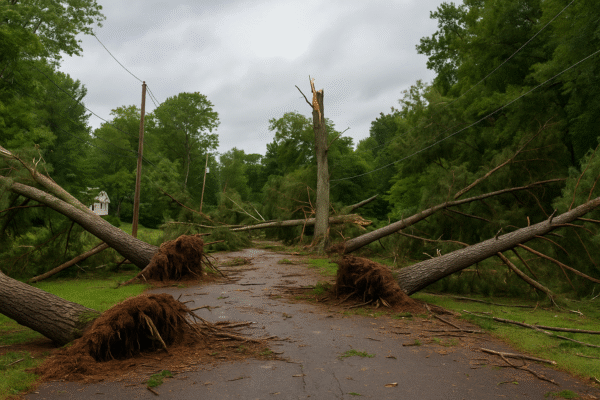The Federal Aviation Administration (FAA) is launching an ambitious effort to upgrade safety at US airports by seeking new, cost-effective runway lighting systems. As the National Airspace System (NAS) grows busier each year, ensuring that pilots, air traffic controllers, and ground staff can operate in a secure environment has never been more critical.
Through a newly issued Request for Information (RFI), the FAA is inviting industry innovators to propose modern solutions that could enhance situational awareness and reduce the risk of runway incursions. With its sights set on deploying these systems at airports that currently lack Runway Status Lights (RWSL), the FAA aims to expand its safety capabilities while also reducing the cost and time associated with traditional installations.
This initiative marks a significant step in modernizing airport infrastructure, strengthening aviation safety, and enhancing the travel experience for millions of passengers across the United States.
Why Runway Safety Matters
Runways are among the most critical—and potentially hazardous—areas of airport operations. Runway incursions, which occur when aircraft or ground vehicles enter a runway without clearance, pose serious risks. Although these incidents are relatively rare, they can lead to dangerous situations if not addressed effectively.
The FAA has long worked to reduce such risks by installing Runway Status Lights (RWSL) at select airports. These in-pavement lights provide real-time signals to pilots and vehicle operators about runway conditions, enhancing safety by delivering immediate visual cues. However, due to the high cost and complex installation requirements, RWSL systems are currently in place at only 20 airports nationwide.
Recognizing the limitations of this approach, the FAA is now seeking alternative technologies that can be implemented more widely and affordably.
The Challenge of Expanding Runway Status Lights
The current RWSL system works by using surface surveillance data to activate embedded lights on runways and taxiways. These lights alert pilots and drivers when it is unsafe to enter, cross, or take off. While the technology has proven effective, expanding it to additional airports presents challenges.
Installing RWSL requires major construction, including trenching, installing conduits, and embedding fixtures directly into the pavement. This work often leads to runway closures, increases costs, and takes months to complete. For smaller or medium-sized airports, the financial and logistical burdens make such installations impractical.
To solve this problem, the FAA is seeking innovative alternatives that provide the same level of safety assurance but with faster deployment and lower costs.
The FAA’s Request for Information
The FAA’s RFI calls on the aviation and technology sectors to propose innovative runway lighting systems that can improve operational safety while overcoming the limitations of RWSL.
Key objectives of the RFI include:
- Rapid deployment: Solutions must be capable of being installed and operational within two to three years.
- Cost-effectiveness: Systems should reduce installation and maintenance expenses compared to current RWSL setups.
- Scalability: Technologies must be adaptable for airports of different sizes, from regional hubs to major international gateways.
- Situational awareness: Systems should provide real-time visual cues to pilots and ground operators, enhancing safety without disrupting air traffic control operations.
The FAA anticipates deploying these new systems at 40 to 50 airports within the next few years, significantly expanding the reach of advanced runway safety capabilities.
Encouraging Innovation in Aviation Safety
This initiative opens the door for private companies, research institutions, and technology providers to play a direct role in shaping the future of aviation safety. The FAA has emphasized that while the RFI is not a formal proposal request, it offers a unique opportunity for industry leaders to showcase their technologies and influence future acquisition strategies.
Potential solutions may include above-ground lighting systems, wireless sensor networks, or portable lighting technologies that can provide the same functionality as RWSL without requiring extensive construction. By tapping into the creativity of the private sector, the FAA hopes to identify breakthrough solutions that can transform runway safety nationwide.
The Future of Airport Operations
As air travel rebounds and the US aviation system becomes increasingly busy, the FAA’s search for new runway lighting solutions reflects a broader effort to modernize infrastructure. By adopting cost-effective, innovative systems, airports will be able to:
- Minimize runway incursions and related risks.
- Improve operational efficiency by reducing construction-related closures.
- Expand safety capabilities to airports that previously could not support RWSL systems.
The adoption of next-generation runway lighting also aligns with the FAA’s long-term commitment to enhancing the overall safety of the NAS. This modernization effort will not only protect pilots and ground staff but also ensure smoother and safer journeys for passengers.
Conclusion
The FAA’s push for innovative runway safety lighting marks a major milestone in the ongoing evolution of US airport operations. By moving beyond the limitations of traditional Runway Status Lights, the agency is opening the door to cost-effective, scalable, and rapidly deployable solutions that can strengthen safety across the aviation system.
As industry leaders respond to the FAA’s call, the future of runway safety will likely include a new generation of lighting technologies capable of supporting the nation’s growing aviation needs. For travelers, pilots, and ground staff alike, this effort represents a brighter, safer, and more efficient future for America’s airports.
For more travel news like this, keep reading Global Travel Wire















